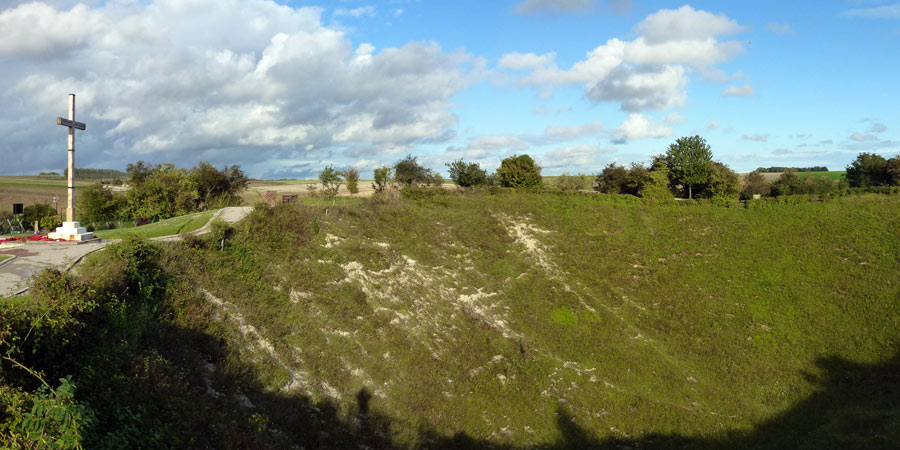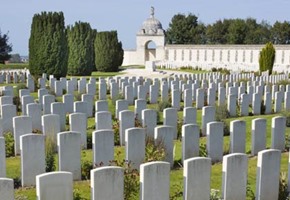As we approach the centenary of the Battle of the Somme we take a closer look at the defining locations, some of which we visit on our Great Rail Journeys Battlefield Tours. Today's is the Lochnagar Crater, and its impact on the opening day of the battle.
The Battle of the Somme began on the 1st of July 1916 as part of an Anglo-French operation named the Somme Offensive. Devised as piece of a wider push on German positions it was agreed upon during the Allied discussions at Chantilly in 1915. At the same time the German army began attacking Verdun, which meant elements of the French force had to be redeployed to try and repulse the new German attack. British generals were under great pressure from their French counterparts to make a significant impact at the Somme, and by doing so would make Germany consider how prudent fighting on two, fully-engaged fronts (as opposed to simply static trench warfare) was.
The opening British attack was a complete disaster in terms of casualties, and the worst single day of fighting in the history of the British Army, some 57,400 casualties were accrued on the opening day, though the French enjoyed some success in overrunning the German positions, on the whole the sheer amount of allied men killed or wounded offset much of the strategic gain. The British force at the Somme was comprised of the remnants of the professional standing army; the British Expeditionary Force (BEF), the territorials and 'Pals battalions' - the recruitment drive by Kitchener to encourage friends and colleagues to sign up and fight together. The battle wouldn't end until 18th November, and by that time more than a million men would be wounded or killed. Making the Somme one of the bloodiest battles in human history.
We take a look at the Lochnagar Crater, a gigantic crater that was created by an explosives packed mine, deployed under the German line at the Somme and detonated on the first day of the battle. Work began on the Lochnagar mine on the 11th of November 1915 by a tunnelling company of Royal Engineers - who dug a series tunnels towards the German positions. Sandbags covered the floor and the engineers moved around barefoot to maintain the silence, as at several points the tunnel came close enough for the Germans to hear the excavation at night, and when there was a lull in the fighting. The mine was packed with 60,000 pounds of ammonal high explosive, made of two charges - and finally detonated at 7.28am by Captain James Young of the 179th Tunnelling Company, destroying part of the German line. The crater became occupied by one of the Pals battalions, who started to fortify the eastern lip but subsequently came under German machine-gun and artillery fire. The occupiers were eventually reinforced by the 9th Cheshire Regiment, helping to push back the German counter-attack. Today the 220 foot-wide crater is covered in grass, with nature hiding its former- seemingly lunar façade. It makes up an essential part of any battlefield tour of the Somme.






